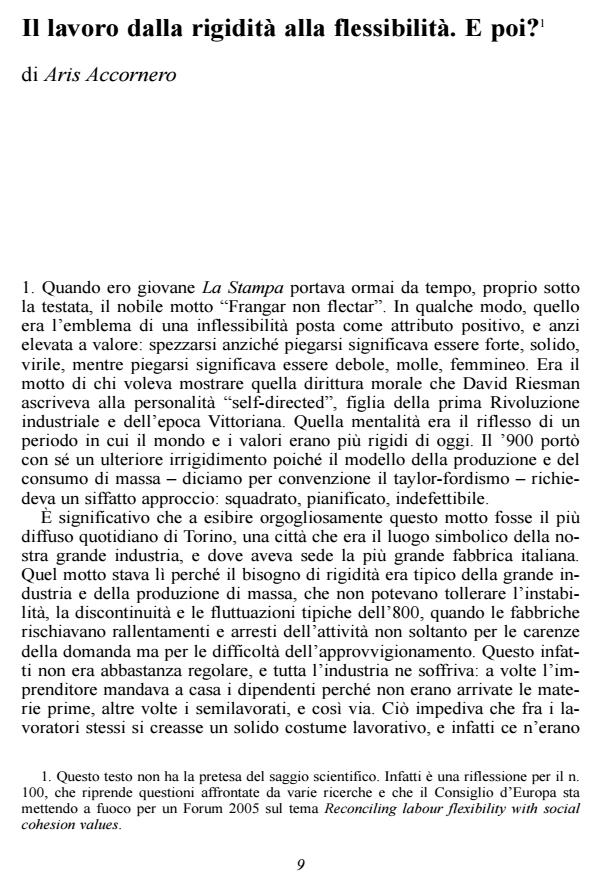Il lavoro dalla rigidità alla flessibilità. E poi?
Titolo Rivista SOCIOLOGIA DEL LAVORO
Autori/Curatori Aris Accornero
Anno di pubblicazione 2006 Fascicolo 2005/100 Lingua Italiano
Numero pagine 15 P. Dimensione file 45 KB
DOI
Il DOI è il codice a barre della proprietà intellettuale: per saperne di più
clicca qui
Qui sotto puoi vedere in anteprima la prima pagina di questo articolo.
Se questo articolo ti interessa, lo puoi acquistare (e scaricare in formato pdf) seguendo le facili indicazioni per acquistare il download credit. Acquista Download Credits per scaricare questo Articolo in formato PDF

FrancoAngeli è membro della Publishers International Linking Association, Inc (PILA)associazione indipendente e non profit per facilitare (attraverso i servizi tecnologici implementati da CrossRef.org) l’accesso degli studiosi ai contenuti digitali nelle pubblicazioni professionali e scientifiche
The end of taylor-fordist model has been also the end of industrial rigidity as a value. Mass production, in fact, required not only rigid structures and organizations but also rigid behaviors and approaches. Post-fordist model implies flexibility instead, both as a value and a paradigm, far beyond the world of industry. Work and workers are requested to be as flexible as firm need. That makes almost all jobs less secure and more discontinue than in the taylor-fordist times. (Before those times, work careers were intended to be naturally varied and complex). Therefore workers need an adequate social security system because. Which one? The state is no more expected to guarantee a work stability on the job but a work citizenship on the market. As a matter of fact, a right mix of flexibility and stability is needed by both workers and firms. On the contrary, the risk would be an exceeding level of flexibility, first of all for firms. Why? Because history tells us that taylor-fordism collapsed as a consequence of an exceeding level of rigidity.;
Aris Accornero, Il lavoro dalla rigidità alla flessibilità. E poi? in "SOCIOLOGIA DEL LAVORO " 100/2005, pp , DOI: